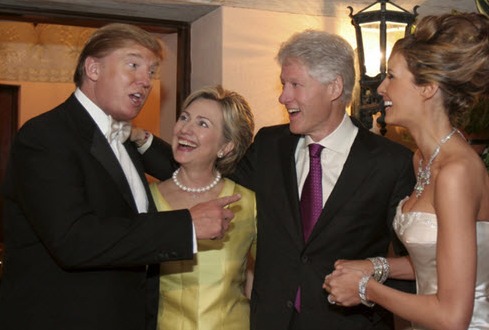Philadelphia — You wouldn’t know it to read the corporate media coverage of Bernie Sanders’ blow-out 50%-margin wins Saturday, March 26 in the three states of Washington, Alaska and Hawaii. While purported “news” organizations like the New York Times and CNN are propagandistically reporting Sanders having won just 25 delegates in Washington, and on that basis are claiming that he only gained some 30 or so delegates on Hillary Clinton, the truth is that he won 72 of Washington state’s delegates along with 17 in Hawaii and 13 in Alaska, for a total of 102 new pledged delegates, compared to just 39 for Clinton, and that as things stand today, the tally stands like this at Clinton: 1266 pledged delegates, Sanders: 1038 pledged delegates. The difference between the two? Clinton is down from a high at one point of some 330 to just a 228-delegate lead, with 1638 pledged delegates yet to be chosen in coming primaries and caucuses.
While Sanders, who has to win the remaining primary contests by an average of 60%, still has to be considered a long-shot, the fact that he has won the last five of six contests by scoring in the 70-80% range, in some cases reducing Clinton to percentages in the teens, shows this is doable. Plus, his recent big wins actually brought his performance requirement for winning the nomination down from an earlier need to win remaining contests by an average of 68% to “just” 56% of the vote.
What this means is that if Sanders can manage to win by a significant amount in New York and Pennsylvania, New Jersey and other eastern and central states, as well as in Oregon, in April and May, this campaign could come down to California on June 7, when 475 pledged delegates are at stake.
What we’re seeing as the national race tightens is Sanders starting to take a much more combative stance against Clinton and the Democratic Party leadership, in response to dirty tricks, Clinton lies, and a rigged election cycle. We’re also, according to exit polling, learning that the more Clinton campaigns, the more votes she is losing, while the more Sanders campaigns, the higher his poll numbers go, and the more he wins by in primaries and caucuses. (the latest national poll, by Bloomberg, taken two days before the March 29 caucuses, has Sanders leading Clinton among all voters by 49-48%). Most of the states Clinton has won, she’s won because of early voting that was done by mail before Sanders and his campaign had begun their publicity in earnest in each state. This is critical because, since his campaign was largely blacked out until he stunningly tied in Iowa and won in New Hampshire in early February and since most mainstream media coverage of him since then has been negative, he has had to rely on rallies and alternative media to get his story out.
 A small bird that landed on Sanders' lectern in a Portland stadium is seen by some as a favorable sign for his campaign (click on image to view video of the surprise visitation)
A small bird that landed on Sanders' lectern in a Portland stadium is seen by some as a favorable sign for his campaign (click on image to view video of the surprise visitation)
But his campaign strategy — hitting the issue of a rigged economy and a bought-and-paid political system — has been gaining traction with primary voters over time, and the money is pouring into his campaign in small donations from millions of backers (he’s raised over $140 million so far with no corporate funding and no PACs), giving Sanders the funding needed to compete in advertising to get his positions out, and, increasingly, to make his case against Clinton and her corporate backers.








